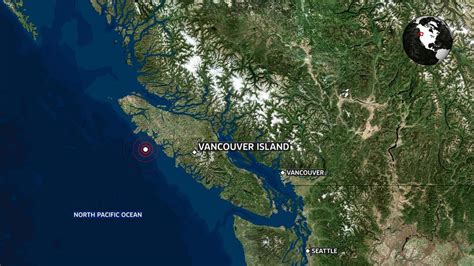Did You Feel the Vancouver Quake? A Comprehensive Guide to Earthquake Preparedness
The Pacific Northwest is a seismically active region, and while major earthquakes are relatively infrequent, it's crucial to be prepared. The recent seismic activity near Vancouver serves as a stark reminder of the importance of earthquake preparedness. This post will help you understand the recent events, and more importantly, how to protect yourself and your loved ones.
Understanding the Vancouver Quake
While the term "quake" might conjure images of a major earthquake, many seismic events are minor tremors. The recent activity near Vancouver likely involved the movement of tectonic plates along existing fault lines. While most people may only experience a subtle shaking, it's important to remember that even minor tremors can be a precursor to larger events.
Identifying Earthquake Activity
News reports, local emergency alerts, and geological surveys provide vital information about earthquake activity. Staying informed through these channels allows you to assess the risk and take appropriate action. Many smartphone applications provide real-time earthquake alerts and information.
Preparing for Earthquakes: A Step-by-Step Guide
Earthquake preparedness isn't a one-time event; it's an ongoing process requiring proactive measures.
1. Develop an Emergency Plan
- Family Communication Plan: Establish a designated meeting point and communication methods in case of separation during an earthquake. Include emergency contact information for all family members.
- Emergency Kit: Gather essential supplies like water (one gallon per person per day for at least three days), non-perishable food, a first-aid kit, a flashlight, a battery-powered radio, extra batteries, medications, and important documents.
- Secure Your Home: Identify potential hazards within your home, such as heavy objects that could fall during an earthquake. Secure these items to prevent injury.
2. Practice Earthquake Drills
Regular earthquake drills familiarize your family with the emergency plan and improve response time during an actual event. Practice "Drop, Cover, and Hold On" – the most effective safety technique during an earthquake.
3. Stay Informed and Updated
- Monitor News and Alerts: Regularly check local news channels, weather alerts, and government websites for information on earthquake warnings and safety advisories.
- Learn About Local Risks: Understanding the potential earthquake risks specific to your area helps tailor your preparedness plan effectively.
Beyond the Immediate Aftermath: Long-Term Preparedness
Earthquake preparedness extends beyond immediate survival; it involves long-term recovery planning.
Post-Earthquake Actions
- Check for Injuries: Assess injuries within your household and provide first aid as needed. Contact emergency services if necessary.
- Check for Damage: Carefully inspect your home for structural damage before re-entering. Avoid damaged areas.
- Stay Informed: Continue monitoring news reports and emergency alerts for updates on infrastructure damage and safety instructions.
Community Support and Resilience
Community involvement plays a vital role in post-earthquake recovery. Supporting local initiatives and connecting with neighbors fosters collective resilience in times of crisis.
Conclusion: Be Prepared, Stay Safe
Experiencing even a minor seismic event like the recent activity near Vancouver underscores the importance of earthquake preparedness. By proactively developing an emergency plan, practicing drills, and staying informed, you can significantly enhance your safety and the safety of your loved ones. Remember, being prepared is not about fear, but about empowering yourself to navigate challenging situations effectively.
